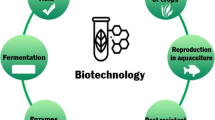Summary and Conclusions
The world food problem has been discussed in terms of food production for a rapidly expanding population, a large portion of which is already undernourished.
Evidence has been presented that legumes are more efficient producers of essential amino acids than either non-legumes or animal sources. A wider use of legumes has been suggested as an aid to the solution of the protein deficiency problem.
Legumes are useful in conserving soil and moisture by increasing infiltration and decreasing runoff, and in improving the physical condition and fertility status of soils by stabilizing soil structure and decreasing the leaching of plant nutrients. The nitrogen status of a soil may be greatly improved by the decomposition of nitrogen-rich leguminous residues.
Yields of edible legumes in the developing regions of the world are generally much lower than in the technologically developed regions. This suggests a considerable potential for increasing protein production by the application of modern technology to legume production in the developing countries.
Legume production can, in many instances, be improved quantitatively and qualitatively by proper inoculation.
Similar content being viewed by others
Literature cited
Alarie, A. (1954), Profits dérivant de l'inoculation des légumineuses. Agriculture (Montreal)11, 7–8, 32.
Allen, O. N. and Allen, Ethel K. (1947), A survey of nodulation among leguminous plants. Soil Sci. Soc. Am. Proc.12, 203–208.
Allen, O. N. and Baldwin, I. L. (1954), Rhizobia-legume relationships. Soil Sci.78, 415–427.
Dawson, Roy C. (1962), Inoculation for better pasture and forage legumes in the tropics. J. Range Management15, 252–257.
Erdman, Lewis W. (1967), Legume inoculation: what it is — what it does. U.S.D.A. Farmer's Bulletin No.2003.
Food and Agriculture Organization of the United Nations (1959), Report of the FAO/CCTA Technical Meeting on Legumes in Agriculture and Human Nutrition, Bukavu, Belgian Congo, 10–15 November, 1958.
Food and Agriculture Organization of the United Nations (1963), Amino acid content of foods (Provisional).
Food and Agriculture Organization of the United Nations (1966), Production Yearbook, 763 pp.
Food and Agriculture Organization of the United Nations (1967), The State of Food and Agriculture, 202 pp.
Food and Nutrition Research Center (Manilla) (1964), Food Composition Table Recommended for use in Philippines.
Harkness, K. A. (1967), New horizons in food production. Department of Agricultural Engineering, Ohio State University, Columbus, Ohio 43210, Mimeo. 13 pp.
Hills, K. Loftus (1963), Tropical pasture legumes in Australia. Span6, 161–164.
Institute of Nutrition of Central America and Panama/Interdepartmental Committee on Nutrition for National Defence, National Institutes of Health (INCAP-ICNND (1961), Food Composition Table for use in Latin America.
Macgillivray, John H. and Bosley, James B. (1962), Amino acid production per acre by plants and animals. Econ. Botany16, 25–30.
Masefield, G. B. (1957), The value of legumes in crop associations in the tropics. World Crops9, 479–481, 484.
McGarity, J. W. (1959), The influence of sod-seeded legumes on the nitrogen economy of grassland soils at Lismore, N.S.W. J. Australian Inst. Agr. Sci.25, 287–293.
National Academy of Sciences, National Research Council (1961), Meeting Protein Needs of Infants and Children. Publication843.
Norris, D. C. (1958), A red strain of Rhizobium fromLotononis bainesii Baker. Australian J. Agr. Research9, 629–632.
Orr, M. L. and Watts, B. K. (1957), Amino acid content of foods. U.S.D.A. Home Economic Research Report No.4.
Rassel, A. (1960), Le voandzou —Voandzeia subterranea Thouars et sa culture au Kwango. Bull. Agr. Congo Belge51, 1–26.
Schaaffhausen, Reimar V. (1963), Economical methods for using the legumeDolichos lablab for soil improvement, food and feed. Turrialba13, 172–179.
Schiffmann, J. (1958), Ineffectiveness of alfalfa nodule bacteria (Rhizobium meliloti) in Negev soils and improvement by soil inoculation. Ktavim9, 57–67.
Semple, Arthur T. (1964),Desmodium barbatum (L.) Benth. from natural tropical pastures of Central and South America. Turrialba14, 205.
Stakman, E. C., Bradfield, Richard and Mangelsdorf, Paul C. (1967), Campaign against Hunger. Harvard University Press, 328 pp.
Verboom, W. C. (1965), Legumes in Zambia. Trop. Agr.42, 229–242.
Vivian, L. A. (1959), The leguminous fodder ‘stylo’ or ‘tropical lucerne’ in Kelantan. The Malayan Agr. J.42, 183–198.
Warmke, H. E., Freye, R. H. and Morris, M. P. (1952), Studies on palatibility of some tropical legumes. Agron. J.44, 517–520.
Watson, E. R. (1963), The influence of subterranean clover pastures on soil fertility. I. Short-term effects. Australian J. Agr. Research14, 796–807.
Whitney, A. S., Kanehiro, Y. and Sherman, G. D. (1967), Nitrogen relationships of three tropical forage legumes in pure stands and in grass mixtures. Agron. J.59, 47–50.
Author information
Authors and Affiliations
Rights and permissions
About this article
Cite this article
Dawson, R.C. Potential for increasing protein production by legume inoculation. Plant Soil 32, 655–673 (1970). https://doi.org/10.1007/BF01372899
Issue Date:
DOI: https://doi.org/10.1007/BF01372899




